2
Illustrator of the Year
Michaela Kukovičová
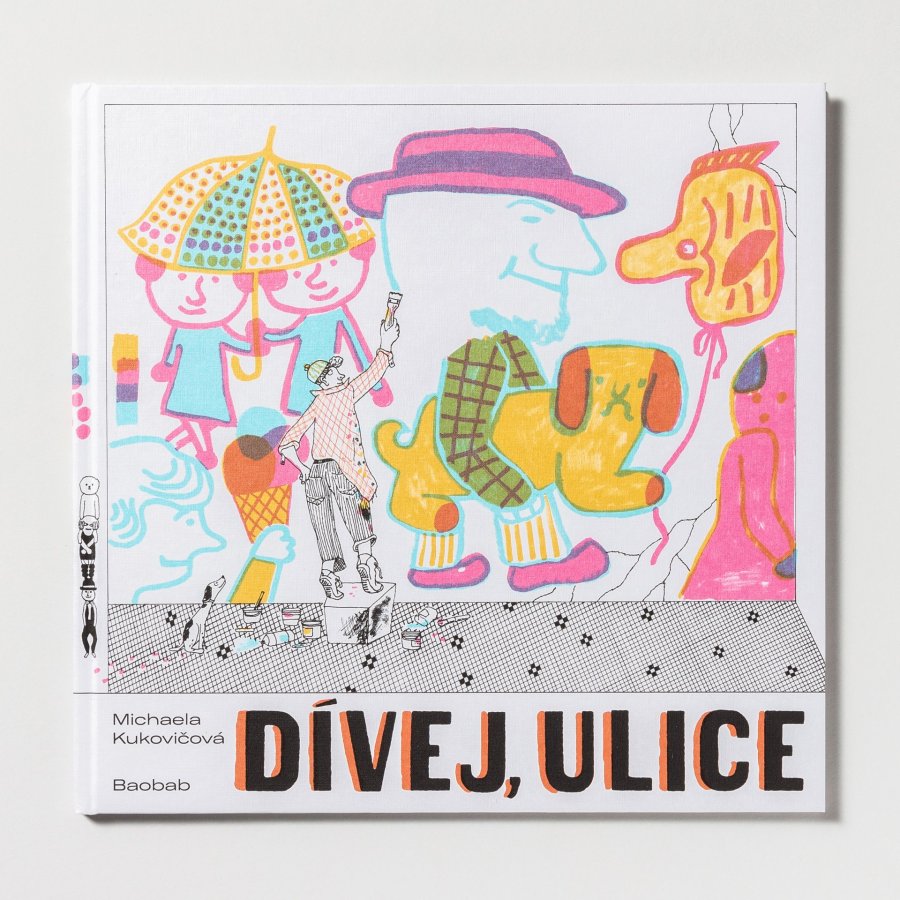
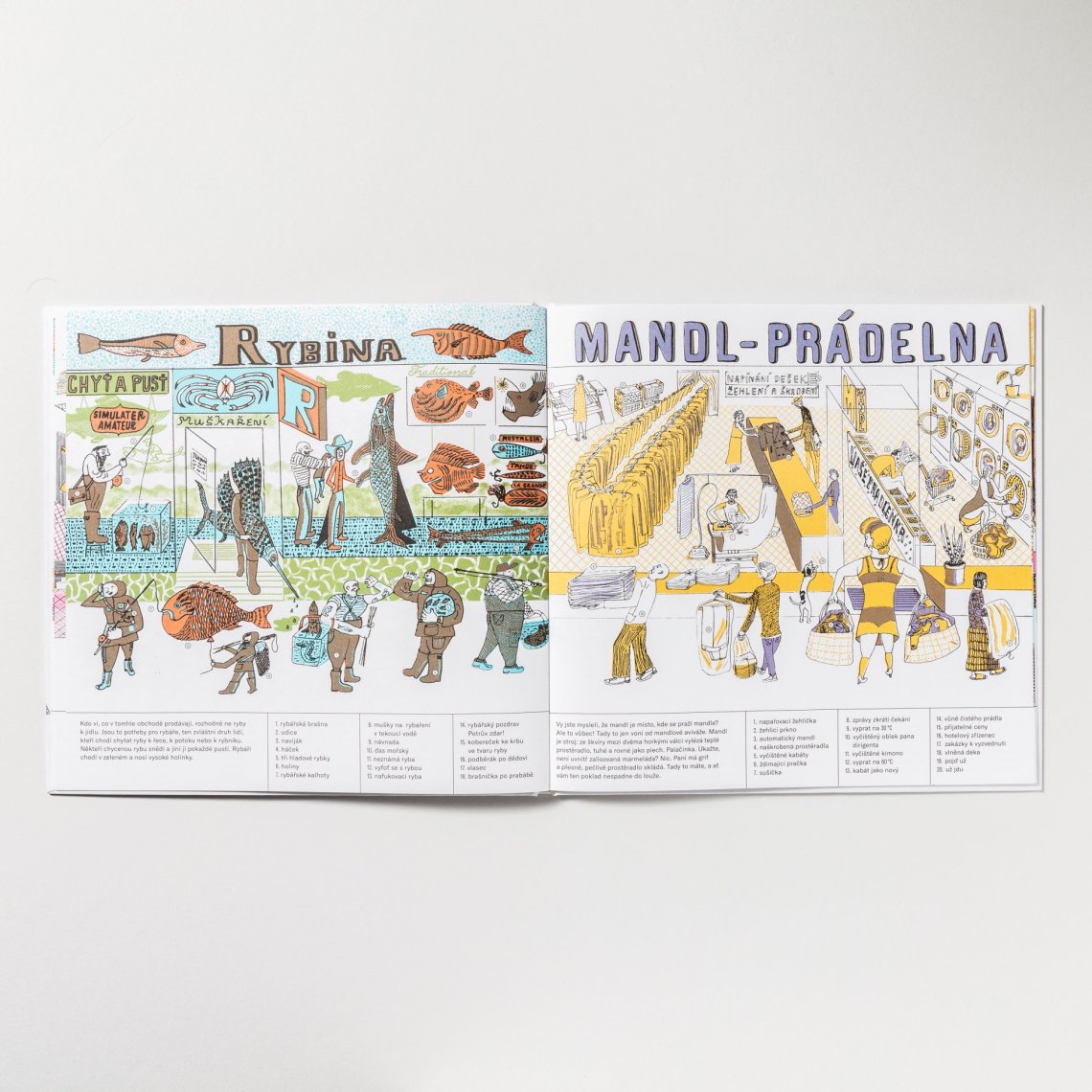
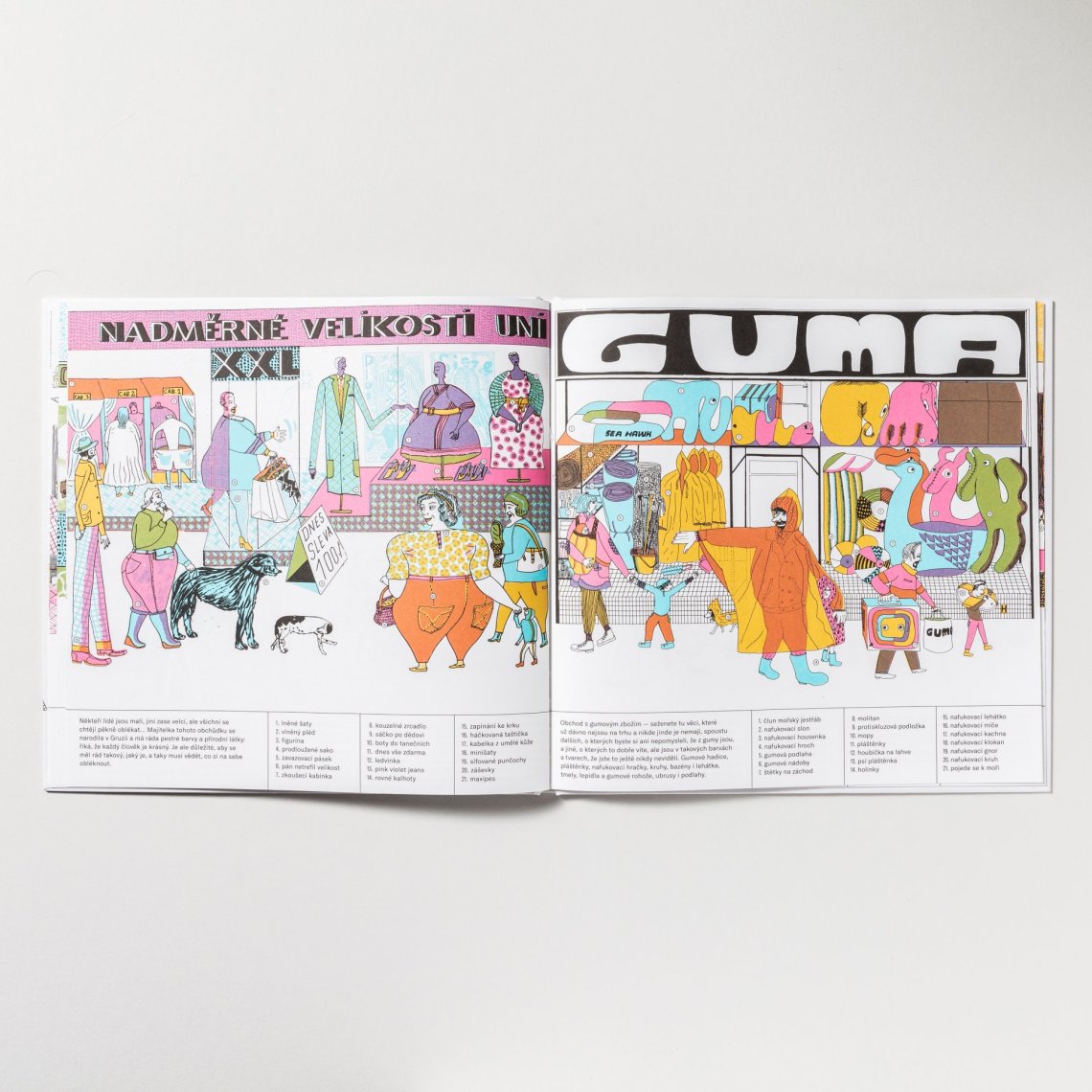
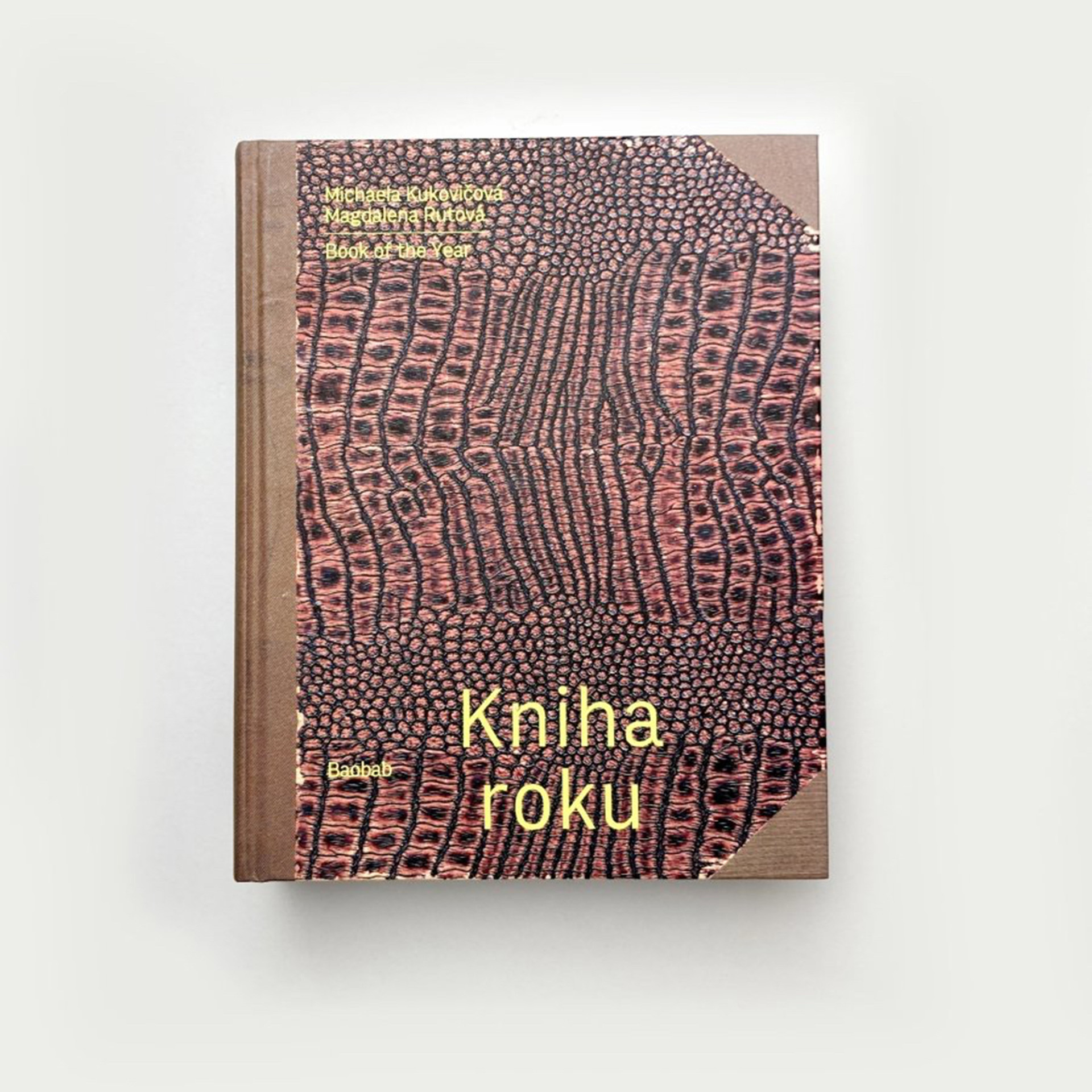
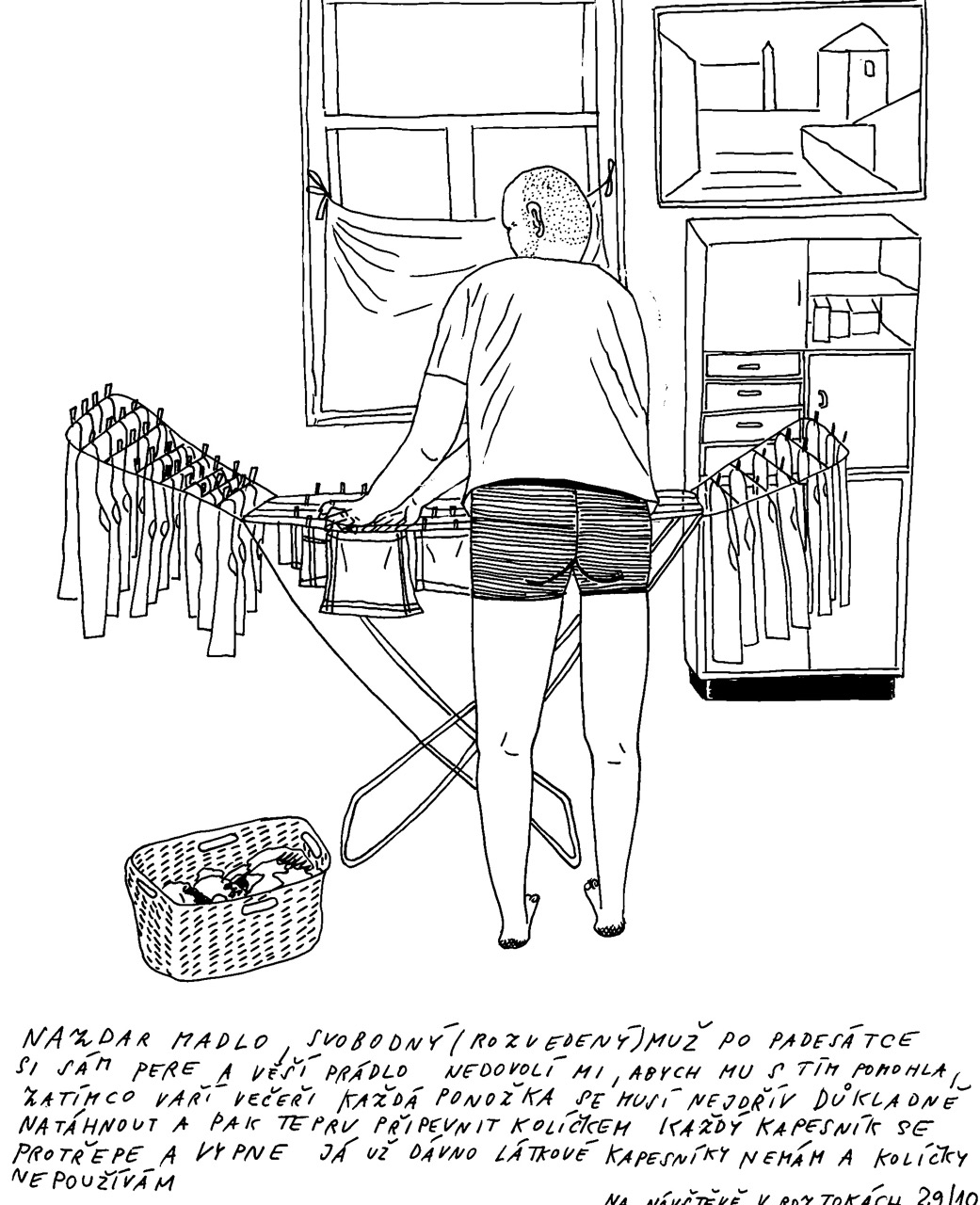
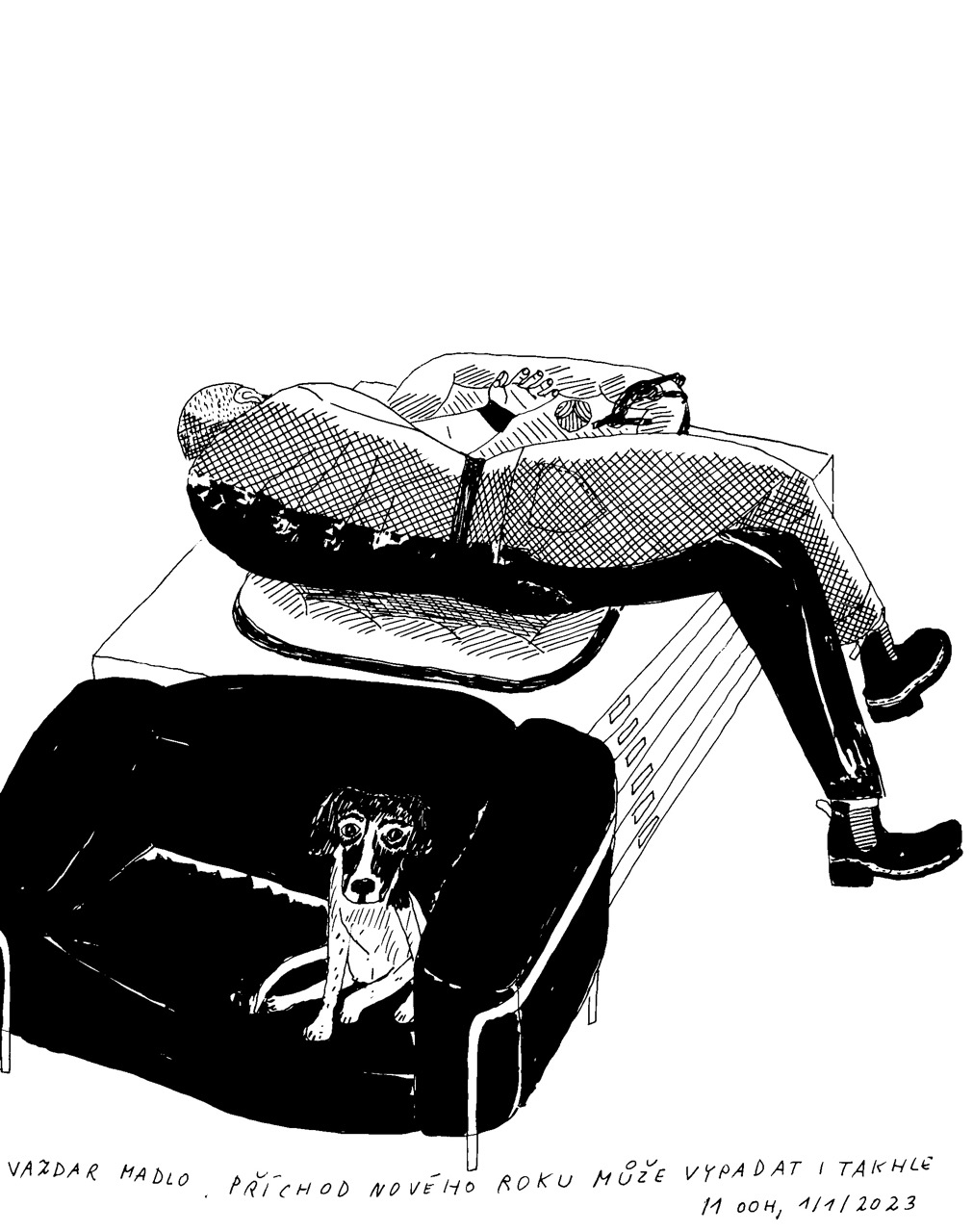
Michaela Kukovičová is not an author who produces books in quick succession. She uses most of her energy for educational and organization endeavors which have often helped make the Czech design scene what it is today. So, it is all the more pleasing to see two books with her illustrations launched in the same year. The original picture book Dívej, ulice! (Look, the street!) was published at the start of 2024, and in autumn, she launched her illustrated diary Kniha roku (Book of the Year) which she produced in collaboration with Magdalena Rutová.
The first is a short, visual love letter to the small shops which have recently been disappearing from Czech city streets due to the pressure from megalomaniac shopping centers. Some are wholly made up while others are based on real shops, such as the GUMA shop which used to reside on Prague’s Ječná street up until the recent pandemic. The drawings are full of details, micro-narratives and little jokes which help rouse children’s imagination, prompting them to engage in dialog with the people reading to them. They sow the seeds for stories while leaving it up to their readers to fill in the blanks. Such light and candid humor is what we often love most about the world’s very best picture books – it presents to the child audience a colorful world with fresh poetics and many stimuli to rile their imaginations. And Michaela Kukovičová also shows her immense ability of observation in myriad details, textures and her original character design.
The 700-page diary Kniha roku is much more raw. The two authors let us peek into their illustrators’ workshops, so to speak, but also give us the tour of a few real kitchens. In these very intimate and ironically humorous stories, Michaela speaks openly of everyday joys and slumps, offering little slices of life washed up by the froth of daydreams. The drawings themselves offer the best in sketch illustrations – a degree of searching, the joy of observation, experimentation, mistakes, shortcuts, genuine feeling. They feel very deft at times, while at other times they are almost naive. With grace and composure, the artist moves between virtuosity and her particular brand of anti-aesthetics.
Although each book feels very different, are variously long and target different audiences, they share a subtle sense of humor, a taste for detail and a sensitive, almost playful style. Michaela does not repeat herself but constantly comes up with something new. Her illustrations are joyful in their experimentation with new forms and expressive styles; and judging by the acclaim both books received, such joy easily transfers to her readers.
Barbora Müllerová
Matěj Beránek
Tereza Bíbová
Petra Cieslar
Monika Čejková
Kateřina Farná
Kristina Fišerová
Tereza Horváthová
František Kast
Iva Knobloch
Ján Kralovič
Ondřej Lipár
Barbora Mülllerová
Veronika Pařízková
Jana Patočková
Pavel Turek
Radim Vondráček
Karolina Voňková
Jana Zielinski